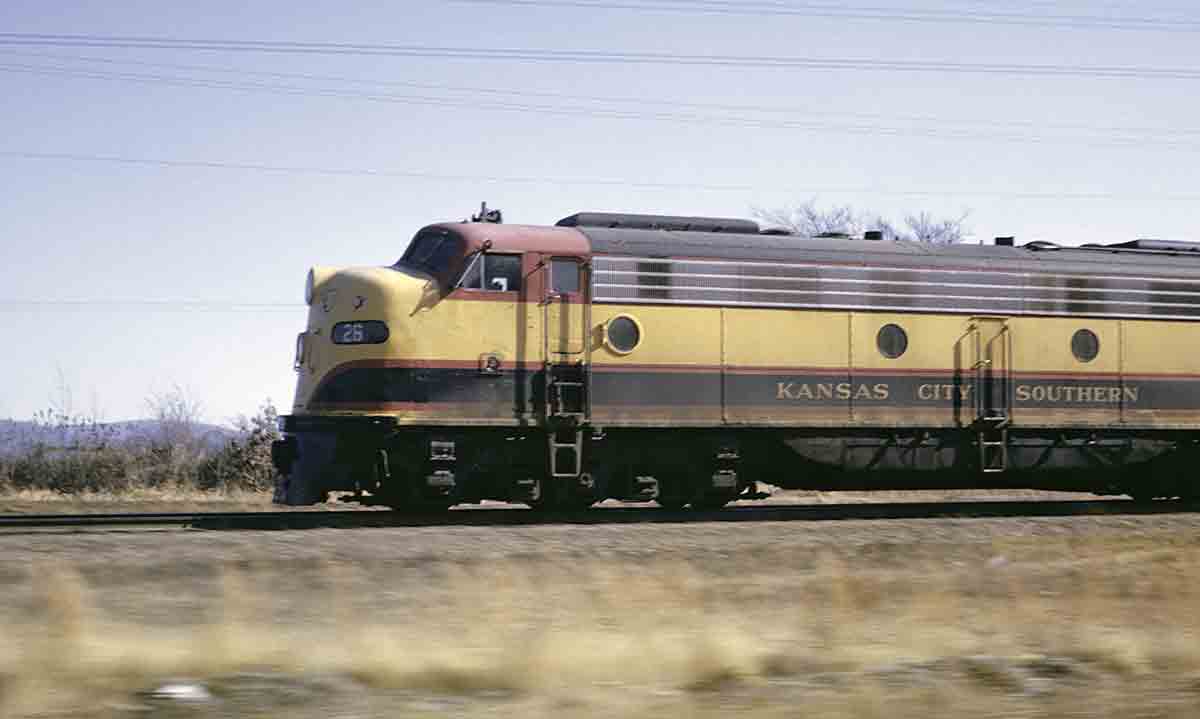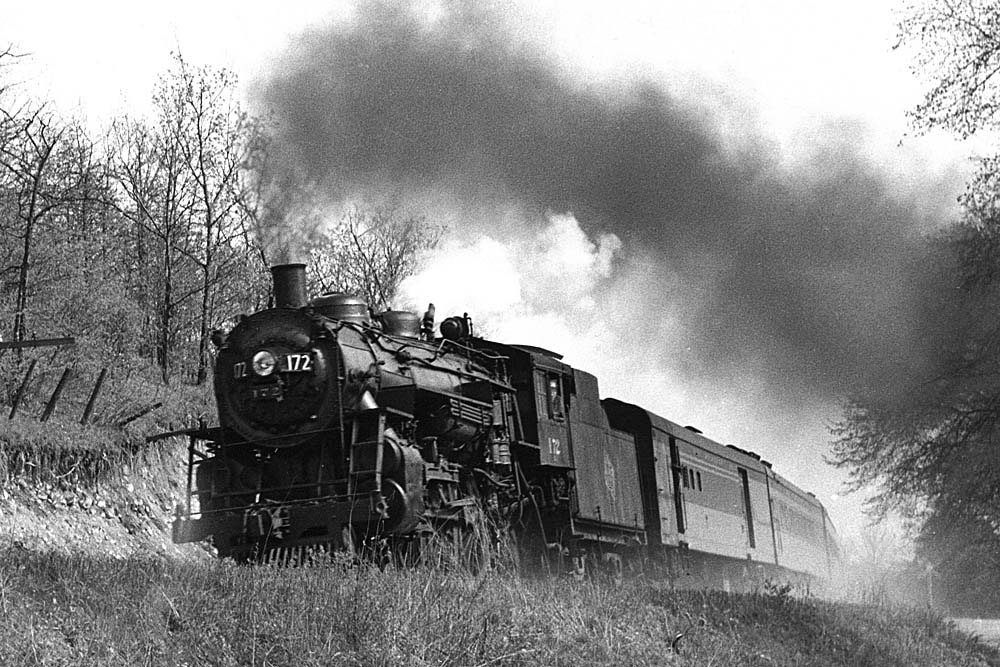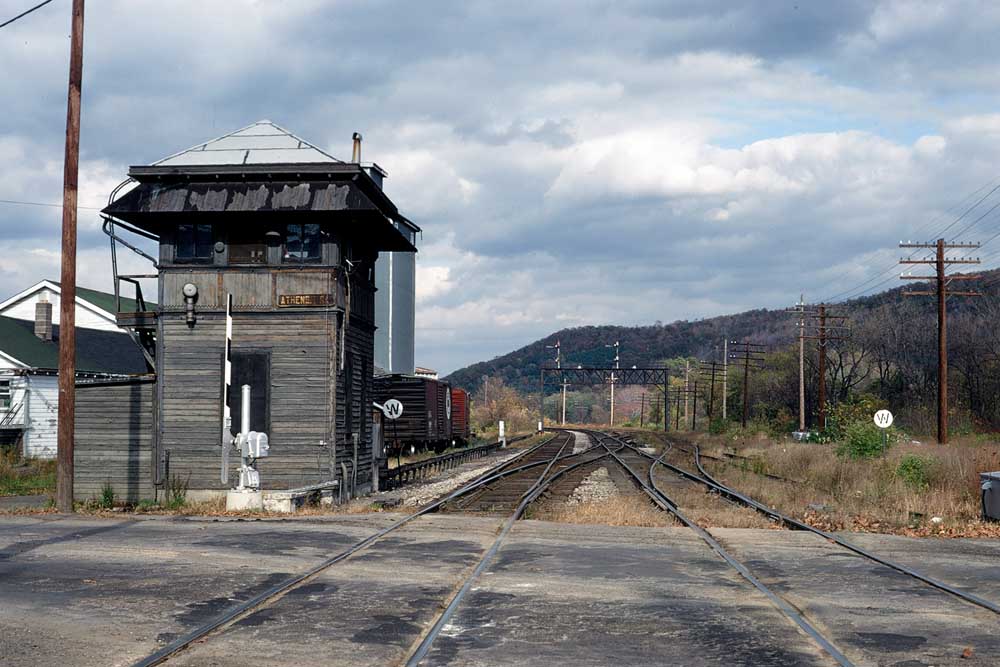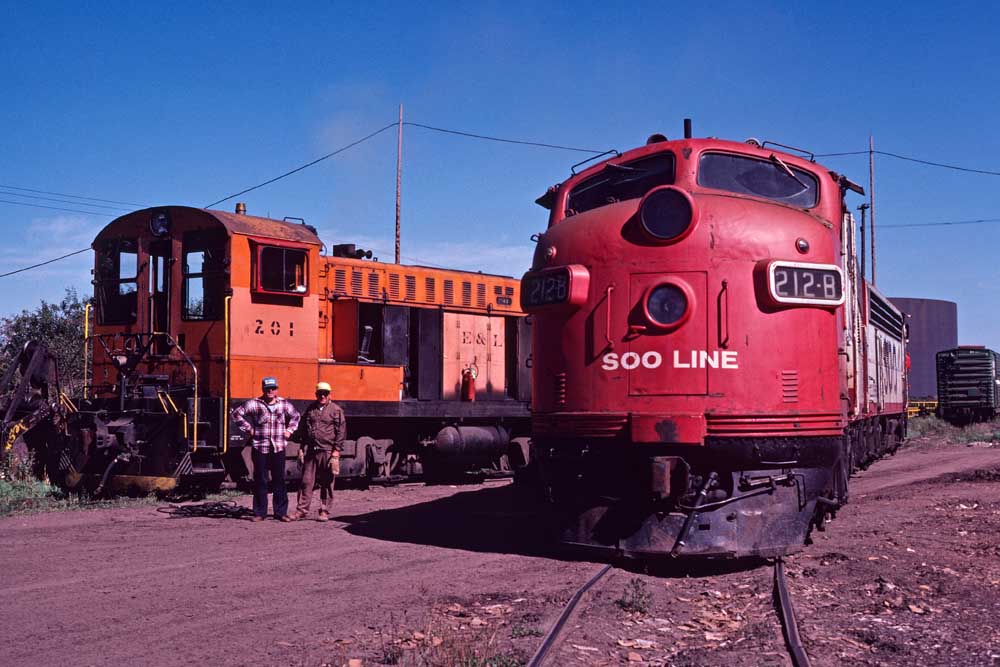I met a rather interesting gentleman who was the regular engineer on the Belle between De Queen and Shreveport, La., a short, feisty man named Earl Seagraves. Earl was quite a colorful character, witty, and a very good engineer. I used to call Earl for the southbound Belle, and if it were a little late—say, 30 minutes or so—he would always say, “I’ll take her in on time.” He would virtually run the wheels off the train to get it into Shreveport on time.
In those days, the KCS’s main line was in pretty bad shape, with slow orders and speed restrictions all over the place. The maximum authorized speed on Earl’s segment, the Fifth Subdivision, was 70 mph for passenger trains.
The scheduled running time for the Belle from De Queen to Shreveport was 2 hours 40 minutes, including a 20-minute stop at Texarkana Union Station to load passengers and set out a car of mail. Also, there were flag stops at Neal Springs and Ashdown, Ark., and Vivian, La. It was a tight schedule for a 128.4-mile run. The Belle had to keep up speed to stay on time.
Earl knew I was a railfan and would often tease me with an offer of a cab ride, which, he guaranteed, would “scare you to death.” I always wanted to take him up on his offer, but never seemed to have time or get around to it, until one September evening in 1969.
I knew the Belle’s days were numbered. A public hearing with the Interstate Commerce Commission regarding its discontinuance was to be held in a few days. It didn’t look good.
On one of my rest days, I was eating supper at Aud’s Café in De Queen. Earl came in to get his coffee bottle filled up. He was called for No. 1, which was running 15 minutes late. He looked at me and said, “What are you up to?” I said, “Nothing.” He said, “Well, come with me tonight and I’ll give you a ride that will scare you to death.” Knowing the Belle would probably soon be gone, I took him up on his offer. I tossed my car keys to a brakeman friend of mine and asked him to pick me up at Ashdown.
I followed Earl down to the depot for my first-ever passenger train cab ride. We walked into the register room. The fireman was already there waiting on us. Earl registered out, picked up and read his train orders, then handed them to his fireman to read. The operator told Earl that the Belle had fallen further behind schedule. Earl said “I’ll still take her in on time.” Then he winked at me.
It wasn’t long until I heard the Belle whistling for Buddy Robinson Road at the north end of the yard. Earl picked up his bag and headed out the door to the platform, with his fireman and me right behind. We were joined by the carman, who was there to ice the engine. We all walked down toward the end of the platform at Stilwell Avenue to mount the engine when the train came to a stop.
Soon the oscillating headlight of the lead E unit could be seen coming around the curve at the south end of De Queen yard as the Belle made her grand entrance, bell ringing amid smoke and red-hot brake shoes. The engine crew from Heavener dismounted, exchanged pleasantries and engine conditions with Earl, and we all mounted up. Earl slung his bag up into the door of the engine and climbed the ladder with his fireman and me close behind. The carman finished his duties and climbed back down the ladder.
Earl looked at his orders one more time, then pulled a wooden cube out of his grip and placed it in the engine brake to keep it bailed off. He then took a matchstick and stuck it in a hole at the top of the speed recorder. An old hogger’s trick, this ensured that the stylus would go up to only 60 mph on the speed tape.
Earl then sat back in the engineer’s seat like he was sitting in an easy chair, watching the side mirror for the conductor’s signal. The conductor yelled “Booaaard!” and waved a highball. Earl whistled off, released the air, opened the throttle, and we were off to the races.
It is a half mile from the De Queen depot to the De Queen & Eastern crossing. Earl hit the diamond at 60 mph—plakita-plakita-plakita! Down through the Arkansas Piney Woods we went in the September dusk. I looked up at the speed recorder and saw the needle was rocking back and forth around 80 mph.
Earl made his first service brake application for the curve at Neal Springs. We went around it and over the Highway 41 crossing at 60 mph. We straightened out and headed into the Little River Bottoms. Earl opened her up again as we whooshed across Little River Bridge and on toward Winthrop, the oscillating headlight beam bouncing off the tall pine trees along the right of way in the evening darkness.
Down through Winthrop we shot like, as the song says, “a rocket sled on rails.” Earl pulled on the whistle cord, sounding the melodious passenger air horn as we passed the recently closed depot at Winthrop. We shot across the south switch at Winthrop at between 80 and 85 mph. Earl sat back in the engineer’s seat, folded his arms across his chest and said, “I love it.”
Down over Flat Creek and up Lipton Hill we flew, whistle screaming for the crossings in Allene, then on down through the hogbacks toward Wilton. As we approached Wilton, Earl made his second service application for the curve at the north end of the passing track. I looked back and there were rings of fire beneath the coaches. Again Earl opened up the throttle. We went across the south switch at 85 mph. We were passing cars on Highway 71 like they were standing still.
We popped around the curve just north of Ashdown. Earl set his brakes just north of the Frisco crossing, and set her down right in front of the depot.
I climbed down the cab ladder in a cloud of brakeshoe smoke. In an instant, Earl whistled off and pulled out of the station. His conductor, Poco Merideth, was standing at a Dutch door of a coach and waved as he flew by. Then all I saw was the red marker light on the cafe-observation car disappear into the Arkansas darkness.
My brakeman friend was waiting for me as I crossed the tracks. Still lingering were the odors of diesel exhaust and red-hot brake shoes.
Alas, less than 60 days later the Southern Belle was gone for good, discontinued like so many other great passenger trains.
Oh, by the way, I checked. After I got off at Ashdown, Earl took her into Shreveport on time that night.
First published in Winter 2008 Classic Trains magazine.
Learn more about railroad history by signing up for the Classic Trains e-mail newsletter. It’s a free monthly e-mail devoted to the golden years of railroading.













